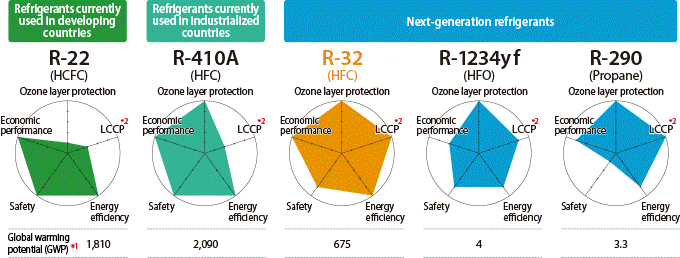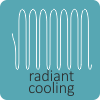HCFCs are commonly used as refrigerants in air-conditioning and refrigeration systems in buildings. As per the Montreal Protocol schedule for developing countries, HCFCs will be completely phased out by 2040. HFCs are being used as replacement to HCFCs. However due to high GWP, HFCs are considered as potent greenhouse gases and hence are controlled under the Kyoto Protocol. Some of the key reasons for ozone depletion is as below:
- Leakage of ODSs from air-conditioning and refrigeration equipment during manufacturing, installation and operation
- End of life recovery and destruction
- Direct CO2-eq emissions.
Key refrigerants available in the market are listed below. Each refrigerant has different ODP and GWP. Based on the global warming and ozone depletion potential, best refrigerant should be used for all commercial purposes.
Table: Refrigerants used in conventional chillers and their environmental impact.
| Refrigerant | ODP | GWP | Application |
| CFC-11 | 1 | 4600 | Centrifugal chillers |
| CFC-12 | 0.82 | 10600 | Freezers, chillers, air conditioners |
| HFC-410 | 0 | 2000 | Air conditioning |
| HCF-134a | 0 | 1600 | CFC-12 replacement |
| HCFC-123 | 0.012 | 120 | CFC-12 replacement |




















